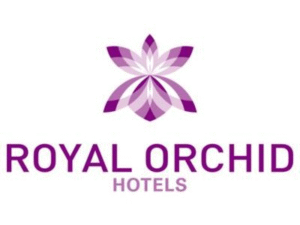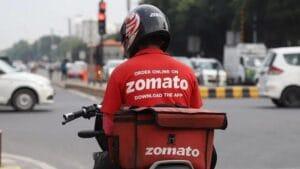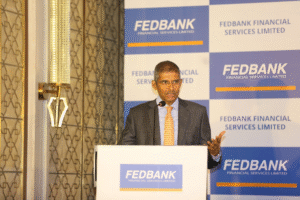1. At a Glance
In a world where farmers pray for rain and investors pray for returns, Dharmaj Crop Guard just delivered both — figuratively. Q1 FY26 revenue up44% YoY, PAT up116%(try getting that in an FD), and EBITDA margins fattened fromlean cowtowell-fed buffalo. With a product list longer than your grocery bill, a Dahej plant churning like a chemical pressure cooker, and a newly-commissioned Saykha facility itching to scale, this agrochemical rookie is playing in the big leagues — and spraying profits like pesticides in peak season.
2. Introduction
If Bollywood had a biopic on agrochemicals, Dharmaj’s story would be the underdog script: born in 2015, survived pesticide price wars, and now throwing shade at the incumbents like PI Industries and Sumitomo.
They’ve built a portfolio of190+ products— insecticides, herbicides, fungicides, micro-fertilizers, and plant growth regulators — catering to both thekhet-wale farmerand theexport-wale dealer.
The growth story isn’t just in the fields; their stock price has already given a 69% return in the last 6 months, which ironically is the only “high” you can legally get from a chemical company without the Narcotics Bureau asking questions.
And unlike most mid-cap agrochemicals that survive on “one killer molecule”, Dharmaj’s diversity means they can withstand a bad monsoon, a pesticide ban, or even that one uncle who only buys “Desi Organic”.
3. Business Model (WTF Do They Even Do?)
Think of Dharmaj as theAmazon of Agrochemicals— but instead of same-day delivery, they’re focused onsame-season spraying.
Segments:
- Branded Formulations (B2C)– ~26% of FY24 revenue. Your everyday insecticides/fungicides with fancy names likeOleppoandOverdo(no, not a Netflix show, just a weed killer).
- Institutional Formulations (B2B)– 65% domestic bulk sales, for large agri-input distributors and state tenders.
- Active Ingredients (B2B)– Supply to other agrochemical makers, including exports to 29 countries.
Moats (if you can call them that):
- Network muscle:24 states, 20 depots, 5,000+ dealers, 15,000+ retail touchpoints.
- Export pipeline:85 registered products, 202 more pending (bureaucracy moves slower than pesticide decomposition).
- Manufacturing firepower:Dahej plant (8,000 MT technicals + intermediates, 25,500 MT formulations) at only 50% utilisation — meaning there’s spare room to grow without capex migraines.
In short — they make it, they brand it, they sell it, and they export it. Rinse and repeat.
4.
Financials Overview
Latest Quarter = Q1 FY26 (Jun 2025)
| Metric | Latest Qtr (₹ Cr) | YoY Qtr | Prev Qtr | YoY % | QoQ % |
|---|---|---|---|---|---|
| Revenue | 367.4 | 255.2 | 210.4 | +44.0% | +74.6% |
| EBITDA | 50.7 | 27.0 | 4.0 | +87.8% | +1,167% (not a typo) |
| PAT | 32.6 | 15.1 | -2.0 | +116.0% | From loss to profit |
| EPS (₹) | 9.64 | 4.46 | -0.72 | +116.0% | N/A |
Commentary:From a ₹2 Cr quarterly loss to ₹33 Cr profit in 3 months — that’s not a turnaround, that’s anIPL-style comeback. Margins exploded to 14% OPM, helped by higher branded sales and exports.
At ₹334 CMP,P/E = 8.67 (quarterly annualised EPS)— cheaper than the headline TTM P/E of 32, meaning the market either doesn’t trust the growth or is asleep.
5. Valuation (Fair Value Range)
Method 1: P/E Approach
- Annualised EPS (₹9.64 × 4) = ₹38.56
- Sector P/E range = 25x to 35x
- FV Range = ₹964 – ₹1,349
Method 2: EV/EBITDA Approach
- Annualised EBITDA = ₹50.7 × 4 = ₹202.8 Cr
- Net Debt = negligible (FCF light but manageable)
- EV/EBITDA sector range = 12x – 15x
- FV Range = ₹975 – ₹1,219
Method 3: DCF (simplified)
- FCF growth assumption: 15% for 5 years, 8% terminal
- Discount rate: 12%
- FV Range ≈ ₹900 – ₹1,150
EduInvesting FV Range:₹900 – ₹1,250Disclaimer: This FV range is for educational purposes only and is not investment advice.
6. What’s Cooking – News, Triggers, Drama
- Saykha Facility Commissioned (Jan 2024)– Phase 1 for insecticides/intermediates; Phase 2 to bring fungicides. At 30% utilisation in 2025,




















